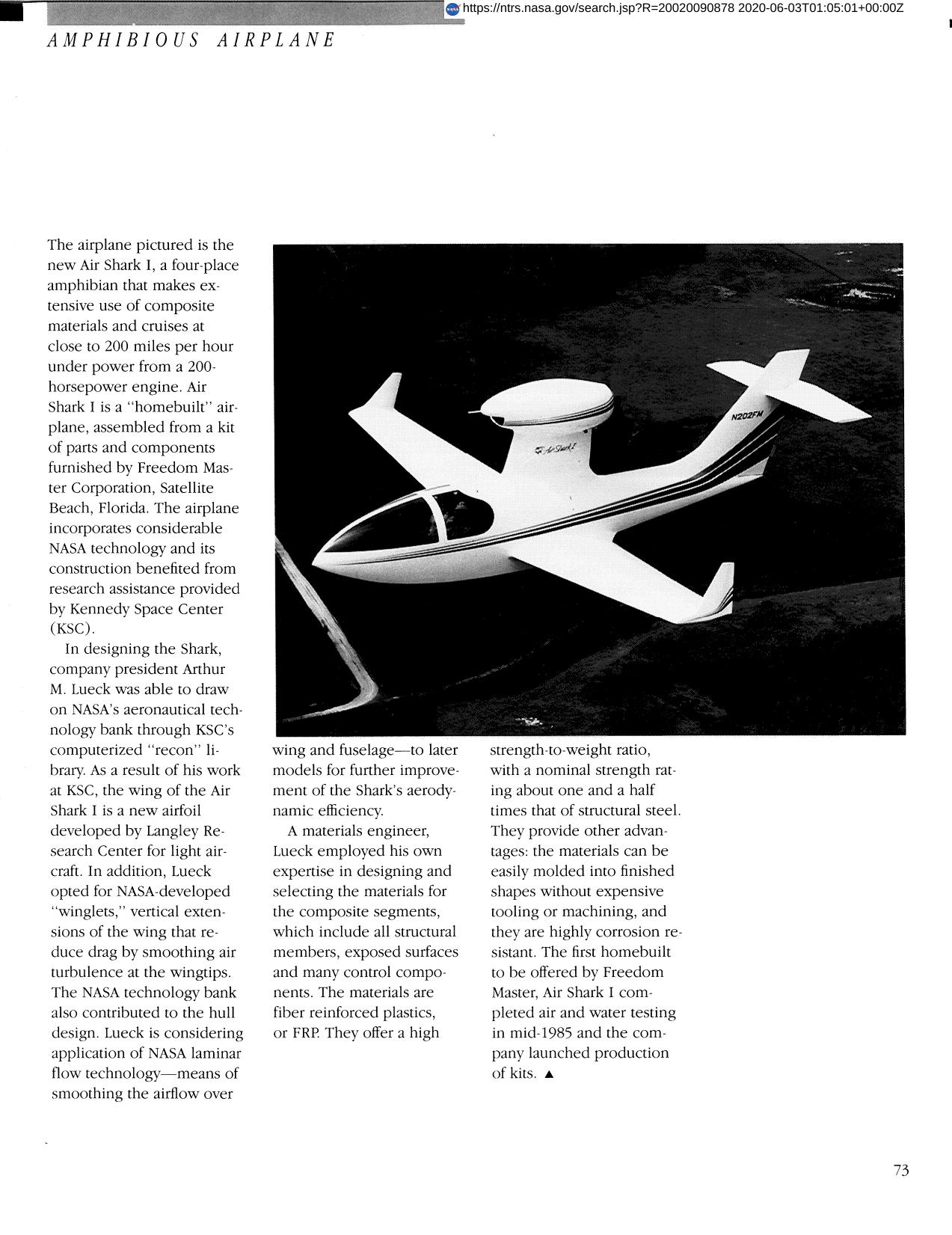
Amphibious Airplane
The Air Shark I, a four-place amphibian, makes extensive use of composite materials and crusies at close to 200 miles per hour under power from a 200-horsepower engine. Air Shark I is a homebuilt" airplane assembled from a kit of parts and components furnished by Freedom Master Corporation. The airplane incorporates considerable NASA technology and its construction benefited from research assistance at Kennedy Space Center. In designing the Shark company president Arthur M. Lueck was able to draw on NASA's aeronatuical technology bank through Kennedy's computerized RECON library. As a result of his work at Kennedy the wing of the plane is a new airfoil developed by Langley Research Center for light aircraft. In addition Lueck opted for NASA-developed "winglets vertical extensions of the wing that reduce drag by smoothing air turbulence at the wing tips.
Full article: http://hdl.handle.net/hdl:2060/20020090878

Amphibious Airplane

Amphibious Airplane













